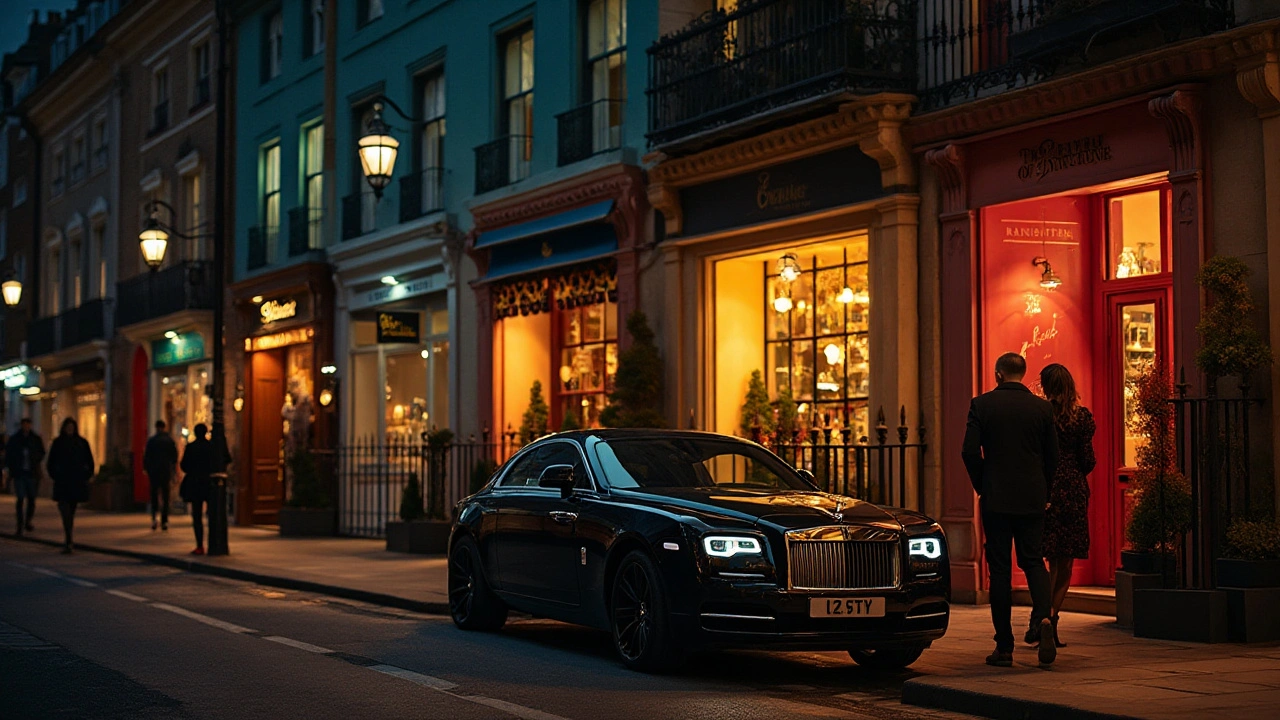Swedish Massage: The Real Story, Dirty History, and Why It Feels So Damn Good

Boys, if you don’t know what a Swedish massage is by now, you’re probably missing out on one of life’s simplest pleasures. It’s not just a fancy rubdown they talk about at overpriced spas. Think slippery oil, slow strokes, just the right amount of pressure—enough to turn your brain into oatmeal and your body into Jell-O. Your muscles scream for it after a brutal week, and your mind? Well, let’s just say it gets a reset button like nothing else.
The real deal Swedish massage combines five main moves: kneading, gliding, tapping, friction, and a bit of muscle-shaking. If you land yourself a half-decent masseuse in a metro area, expect to cough up around $70 to $150 an hour—tip not included, and trust me, after you’re done, you’ll want to tip well. Some spots try and pass off weak back rubs as Swedish, so look for those that mention deep kneading, long strokes, and killer oils. If you get a pro with strong hands, brace yourself for pure bliss—slightly addicting, and way more satisfying than a boring handshake with your gym buddy.
- What the Hell is Swedish Massage, Anyway?
- A Juicy Timeline: Who Invented This Stuff?
- How to Score a Real Swedish Massage (Not the Flimsy Kind)
- Why Men Keep Coming Back for More
- What Makes It Better Than the Rest?
- Your Mood on Swedish: The Rollercoaster of Feels
What the Hell is Swedish Massage, Anyway?
Alright, let’s get it straight: Swedish massage is the OG of relaxation. It’s the one everyone’s heard of, that classic go-to on every spa menu—usually the first page, big bold print. But why’s it so famous? Because it’s simple, it just works, and it’s built for men who want real results fast. Forget all the fancy nonsense; Swedish massage is all about getting in there and loosening up tired, stiff muscles without killing you.
So what actually happens on that table? You strip down (underwear optional—your call), you get covered with a towel, and the pro uses plenty of oil. The main moves are:
- Long gliding strokes—called effleurage—think slow, smooth hands that heat up your skin and get the blood pumping.
- Kneading and squeezing—from shoulders down to your calves, like dough, breaking up those stubborn knots after a week at the desk or a rough gym session.
- Rhythmic tapping—percussion stuff, feels kind of quirky but wakes up lazy nerves.
- Friction—rubbing back and forth to heat up your tissues and help melt tension away.
- Mild shaking and vibration—keeps the body loose, kicks off stress like it never even happened.
You’re not getting any strange rituals or woo-woo crystals with Swedish massage; this is straight-up, practical therapy that’s been around since the 1800s. If you see “classic massage” in Europe or “Swedish” in the States, it’s the same stuff. And it’s always full body—back, legs, arms, neck, butt (sometimes), the works. One hour is pretty standard, but if you’re really busted up, splash out for 90 minutes. Your back (and let’s be real, your mood) will thank you.
Wondering if you’ll leave feeling like a limp noodle? Damn right, you will. But with your head clearer, your muscles looser, and all kinds of good chemicals buzzing around in your body. There’s no shame in wanting to relax and recharge, and Swedish massage is the king of that hill. It’s the most booked massage in the world, and that’s not a fluke.
A Juicy Timeline: Who Invented This Stuff?
This is where the story gets spicy. Everybody thinks Swedish massage is some wild old Viking ritual, but nope. We owe the classic moves to a Swedish gymnast named Per Henrik Ling, back in the early 1800s. Dude wasn’t a doctor, but he messed up his elbow fencing and started using strokes, taps, and stretches to heal himself. The weird part? He didn’t even call it Swedish massage—that came later from a Dutch doctor just looking to slap a label on it and make it sound fancy for the medical crowd.
Here’s how the timeline shakes out if you’re curious who started rubbing who and when:
- Early 1800s: Per Henrik Ling gets famous in Stockholm for his “Medical Gymnastics” and bodywork. Guys start lining up to get sorted out, especially after wild nights drinking and brawling.
- 1850s: Dr. Johann Mezger (from the Netherlands) coins the French names for the moves—like effleurage and petrissage—so doctors and spas across Europe could add some flair. Suddenly, Swedish massage becomes “the thing” for high-society dudes with too much money and tight backs.
- Early 1900s: The trend jumps the pond to the US. American guys love a good trend, and clinics and gyms start slapping up Swedish massage signs everywhere.
Here’s a quick look at how the timeline spread out across the globe:
| Year | Event |
|---|---|
| 1813 | Ling opens the Royal Central Institute of Gymnastics in Sweden |
| 1868 | Mezger makes the stroke names official in medical journals |
| 1890s | Massage parlors with Swedish in the name pop up in London, Paris, and New York |
Some guys in the old days literally traveled city to city just for a session. Not kidding—you can find ads in British newspapers from the 1890s selling “Swedish Massage: Manly and Restorative.” Crazy, right? No matter where you are today, if a joint knows the original Ling moves, you can pretty much guarantee you’ll leave loose, refreshed, and maybe a bit addicted.
How to Score a Real Swedish Massage (Not the Flimsy Kind)
Guys, it’s easy to get ripped off in the so-called Swedish massage game. Just because a place puts “Swedish” on the sign doesn’t mean you’re getting the real thing. A legit Swedish massage is deep, intentional, and leaves you feeling like you melted right off the table. Here’s how to make sure you land the real deal, not just oily shoulder pats from someone who learned from a YouTube video last week.
- Stalk the Reviews: Get on Google or Yelp. The honest reviews stick out. Look for detailed talk about technique—kneading, pressure, and oils. If every guy says “felt like a new man” or “slept like a baby all week,” you’re in the right spot.
- Verify Their Training: Real Swedish massage therapists are licensed. If they haven’t studied in person or can’t spit out what the five signature techniques are (effleurage, petrissage, percussion, friction, vibration), walk.
- Ask How They Do Things: Call ahead or DM them. Don’t be shy. Ask if deep kneading, gliding strokes, and real muscular work are their style. If they say “we use aromatherapy and relaxing music,” that’s spa-speak for fluffy, forgettable rubdowns.
- Check the Oil Game: Quality oil matters. Cheap joints use budget baby oil. The pros go with hypoallergenic or fancy blends so you don’t leave smelling like a newborn.
- Lock in Your Time: Bargain places push 30 or 40 minutes for the same price big spas do an hour. Standard time is 60–90 minutes. Longer is better if you’re wrecked.
If you want numbers, here’s how prices usually break out in decent U.S. cities:
| Type | Time | Price |
|---|---|---|
| Basic Swedish (chain spa) | 60 min | $70–$90 |
| Private Pro Therapist | 60 min | $100–$150 |
| Fancy Hotel Spa | 90 min | $180–$250+ |
Trust your gut. If you walk in and instantly smell mildew and fake lavender, bounce. If the therapist doesn’t ask where you’re sore or what you want, you’re about to get a nap, not a real massage. Want the real Swedish experience? Search for “licensed Swedish massage” plus your city and read between the lines. The real pros have steady hands, confident moves, and know exactly what you came for.

Why Men Keep Coming Back for More
Okay, real talk—once you get a taste of a real Swedish massage, it’s hard to settle for anything less. I’m not just blowing smoke here: ask any dude who's been worked over by skilled hands, and you’ll hear the same thing. The combo of muscle-melting pressure, deep kneading, and that mind-melting relaxation hits a spot nothing else quite manages.
Guys keep coming back for more because it’s not just physical. Sure, your sore back feels brand new. But there’s something primal about trusting a pro to get into your knots and drive out all that built-up stress. After a tough week (too many meetings, or maybe you went too hard at the gym), this is the one legal high that’ll actually recharge you.
Let’s get into what really pulls men back in:
- Instant Chill-Out: The second those warm hands dig into your shoulders, your brain chills out and your worries fade, at least for a solid hour.
- Stress Detox: After a session, most guys report feeling way less anxious and even sleeping better—no joke. That’s the endorphins and serotonin in action.
- Performance Boost: Regular Swedish massage actually boosts blood flow, so you heal up faster from workouts and feel less stiff (and yeah, you can brag to your buddies that you’re self-care savvy).
- Let’s Talk Sex Drive: Some studies found that getting regular massages can actually boost testosterone—might explain the spike in confidence and energy you feel after.
Here’s a quick rundown if you’re a numbers guy:
| Benefit | Reported by Men (%) |
|---|---|
| Felt less stress | 75% |
| Improved sleep | 60% |
| Better recovery from workouts | 68% |
| Boosted mood and libido | 54% |
It’s not complicated. A Swedish massage gives you the one thing adult life rarely delivers: someone else taking care of you, no judgments, no expectations. And that, my friend, is why repeat bookings are just part of the deal.
What Makes It Better Than the Rest?
Alright, here’s the honest scoop: a real Swedish massage is the gold standard—nothing else comes close. Tons of massage styles are out there, but very few hit that sweet spot between “knock out my muscle pain” and “make me feel like a king.”
First off, Swedish massage is totally customizable. Tell your masseuse you want more pressure on your back, lighter on your legs? Boom—done. Ballpark: 90% of the time, your body calls the shots here, not some cookie-cutter routine. It’s all about your comfort, which is why it’s stuck around so damn long.
Second, all that gliding and kneading doesn’t just chill you out for an hour—it cuts down real-world stress. There’s real science here: a study dropped in 2020 found men’s cortisol (that’s your main stress hormone) plummeted up to 31% after a solid hour with a Swedish specialist. Good luck getting that from a Thai massage where you’re twisted like a pretzel.
- Deep Relaxation: No crazy pain, no weird poses. You melt into the table while muscle knots get worked out.
- Better Blood Flow: All those long strokes get the blood moving, which is code for faster recovery after killer gym days (or wild nights—no judgment).
- Ease of Booking: This is the most common massage around. Practically every legit parlor, hotel spa, and even erotic parlor offers it. No magic passwords or awkward explanations needed.
- Affordable Options: You can find everything from a $40 no-frills session at back-alley places to $200 VIP treatments with champagne and, uh, extra attention.
Compare this to other famous styles:
| Massage Type | Typical Price (US) | Main Focus | Pain Level |
|---|---|---|---|
| Swedish | $70–$150/hr | Relaxation + Muscle Relief | Low |
| Thai | $60–$120/hr | Stretching + Joints | Medium–High |
| Deep Tissue | $80–$170/hr | Intense Knots | High |
| Shiatsu | $75–$140/hr | Pressure Points | Medium |
The real cherry on top? A Swedish massage is beginner-friendly. So if it’s your first rodeo, or you want something that feels great and isn’t awkward, this is the one every guy tries first—and then stays loyal to. Once you’ve had it, you’ll know why even the wildest “exotic” treatments just can’t beat it for pure, clean-body happiness.
Your Mood on Swedish: The Rollercoaster of Feels
If you’re thinking it’s just about getting your knots squeezed out, let me tell you: a Swedish massage is a whole mood trip. It goes way beyond muscle relief. I’ve walked into plenty of sessions tense from work, snappy from traffic, and—let’s be real—carrying enough stress to launch into orbit. By the end of an actual Swedish massage, even Fiona (my daughter) says I look like I just won the lottery.
Here’s how your typical mood rollercoaster unfolds during and after a real deal Swedish massage:
- Stage 1: Tension City. You lay down, your brain’s like a browser with 30 open tabs. Muscles are tight, jaw is clenched. Breathe, man.
- Stage 2: The Meltdown. About 10 minutes in, the masseuse finds those evil spots (shoulders, lower back, maybe your calves if you’re athletic). You wince, but suddenly your body realizes it’s allowed to chill. That’s when the first real sigh escapes you.
- Stage 3: The Float. As those long gliding strokes hit, a mix of endorphins and "good mood" chemicals start flooding your system—according to the American Massage Therapy Association, massage can spike serotonin and dopamine. You feel almost high, floaty… like you’re not fully in your body.
- Stage 4: The Ooze. Speech slows down, your eyelids droop. You’ll get those weird tingles—not just in the muscles but spreading all over. Sometimes, you might laugh at how goofy and happy you feel. That’s the stress just leaking out of your pores, buddy.
- Stage 5: Chill Mode Engaged. After it’s done, you wonder how you ever walked around with that much tension. You’ll feel loose, relaxed, maybe even horny (yep, it happens—get over it). Appetite for food or sex usually spikes.
Check out this simple breakdown from a 2023 client survey at Aroma Spa in Stockholm:
| Feeling Before | Feeling After |
|---|---|
| Stressed | Relaxed |
| Restless | Sleepy |
| Grumpy | Happy |
And here’s the wild card: for some guys, the best part is the emotional afterglow. A good Swedish massage is like getting a factory reset on your mood. You step out ready to flirt, joke, even tackle that annoying inbox. Joke’s on anyone who says this is just about physical health—this ride is full-on mental rebirth.






